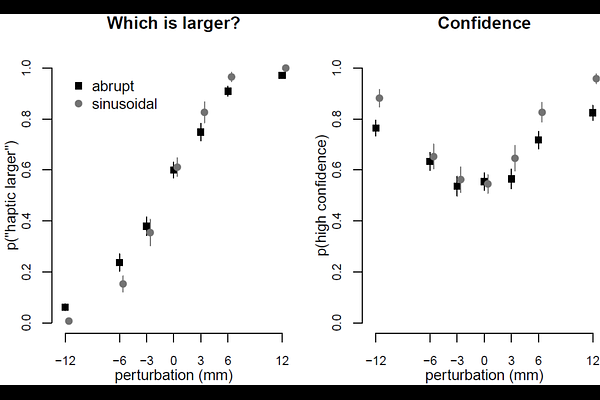Can Pupillometry Reveal Perturbation Detection in Sensorimotor Adaptation during Grasping?

Can Pupillometry Reveal Perturbation Detection in Sensorimotor Adaptation during Grasping?
Pfalz, L.; Müller, C.; Kopiske, K.
AbstractHumans adjust their motor actions to correct for errors both with and without being aware of doing so. Little is known, however, about what makes errors detectable for the actor. Here, we replicate and extend prior work showing that motor adjustments may mask the very errors they correct for. We also investigated pupillometry as an unobtrusive no-report marker of perturbation detection. N=48 participants grasped objects while a visuo-haptic size mismatch was applied either sinusoidally or abruptly. When mismatches started abruptly and thereafter stayed the same, participants adapted well but also showed decreasing discrimination performance and decreasing confidence in their responses. This was not the case for sinusoidally introduced perturbations. We also show that parameters that characterize phasic and tonic pupil responses were predicted by stimulus parameters and differed depending on participants\' grasping and behavioral responses. However, predicting response characteristics from pupil-dilation features using support-vector machine classifiers was not successful. This shows that while pupillometry may yet prove to be a useful no-report marker of perturbation and error detection, there are some challenges for trial-by-trial prediction.